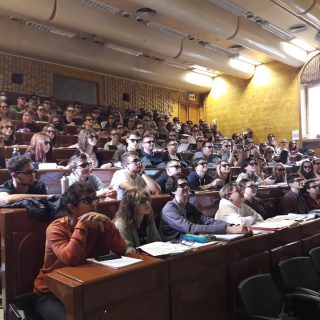As anatomy forms the foundation of medical education, so do dissection and visualization play a crucial role in anatomy teaching. At the Department of Anatomy and Histology, Professor Péter Sótonyi introduced the concept of live dissections accompanied by camera tracking and projection through a projector screen, known as the plenary lecture, in the early 2000s. Over the past decades, the department has continuously improved the system, making incremental advancements in resolution, lighting, and projection surface, keeping up with technological progress.
Now, we have successfully modernized everything at once by installing a unique three-dimensional projection system suitable for live broadcasting in the Zimmermann Ágoston Lecture Hall. The foundation of this 21 million forint investment was laid with the installation of a specially designed “Full HD” resolution 3D camera, which has been operational since December of last year and significantly enhanced the image quality of online lectures in the spring. In the fall, the final elements of the system, including state-of-the-art laser projectors and a touchscreen control system, were also put in place. Students acquired the necessary 3D glasses, transforming the anatomy lectures into a cinematic experience. Not only has the resolution, lighting, sharpness, and colour accuracy improved, but the most significant change is the perception of depth. Superficial structures now stand out from the underlying ones, the holes at the base of the skull become comprehensible, and the surface contours of joints are visually striking from the front. This breakthrough has opened up new perspectives for demonstrations, making one of the most challenging lessons more straightforward, understandable, and exciting.
For those who find three-dimensional projection uncomfortable for any reason, the control system simultaneously projects the same image in 2D onto the other screen in the room. Teachers can take advantage of this flexibility throughout the entire lecture, independent of camera usage, by combining the sources projected onto the two screens, whether it be the camera’s image or the lecturer’s computer. Naturally, all of this can also be transmitted via the internet in the case of remote learning.
We are incredibly proud that no other veterinary educational institution utilizes a 3D projection system of this kind for teaching purposes. We believe that this system will assist both our undergraduate students and colleagues participating in further education programs in understanding, mastering, and developing an affinity for anatomy.










